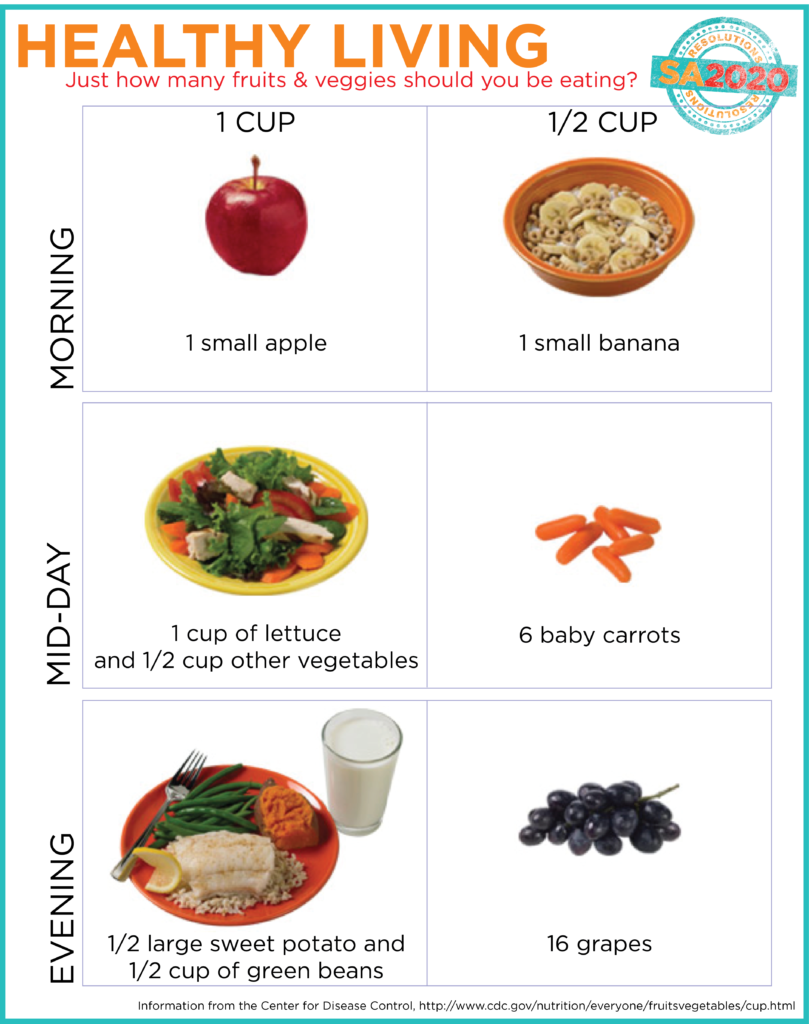 By Jessica Rios, Health and Fitness Partnership Manager for SA2020
By Jessica Rios, Health and Fitness Partnership Manager for SA2020
If you made an SA2020 Resolution to follow our Healthy Living Leader, City Council Rep. Diego Bernal, then you’ve resolved to eat at least 5 servings of fruits and veggies per day. We all hear that it is healthy to eat five servings of fruits and veggies, but what does that really mean? Does it mean two servings of veggies and three servings of fruits or four servings of veggies and one serving of fruit? Well, I went on mission to find out what this really means and how we, as San Antonians should be eating.
According to MedlinePlus, one serving of fruit or vegetables is equivalent to the palm of your hand; and we should be having four to five of these handfuls each day. In general it is best to have more vegetables than fruit, meaning that it is recommended that each person have two servings or handfuls of fruit and three servings or handfuls of veggies. Still having trouble on how much to eat? Well let me break it down even more, the Center for Disease Control gives us more insight as to what truly counts as a cup and what time of day to eat the portions.
Easy? If you still need more guidance, as to what a serving size is for any other fruits and veggies please click here. This table of serving sizes will function as a guide to feed you and your family healthy and recommended food portions.
Now that we got what a serving size is and how many servings are recommended out of the way, here are a ten reasons it is important to eat the four to five servings of fruits of veggies a day. Eating vegetables and fruits can:
- Reduce risk for health disease, health attacks and stroke.
- Protect against certain types of cancers.
- Lower blood pressure.
- Reduce the risk of developing kidney stones.
- Reduce the risk of heart disease, obesity and type 2 diabetes.
- Lower calorie intake.
- Prevent constipation.
- Keep eyes in good shape.
- Decrease bone loss.
- Give you a longer, healthier life.
Interested in finding out what is the best for you? The Center for Disease Control provides a calculator that will let you know how many fruits and vegetables you need each day. The results are based on age, sex and physical activity; to use the Calculator, click here.
I hope these helpful hints guide you and your family to making 2014 a healthier year!


